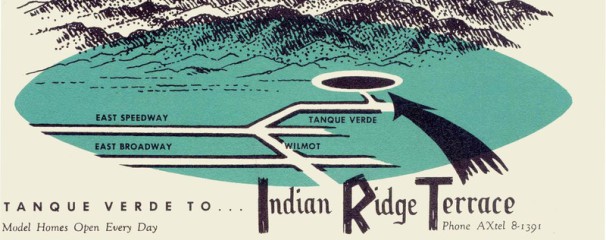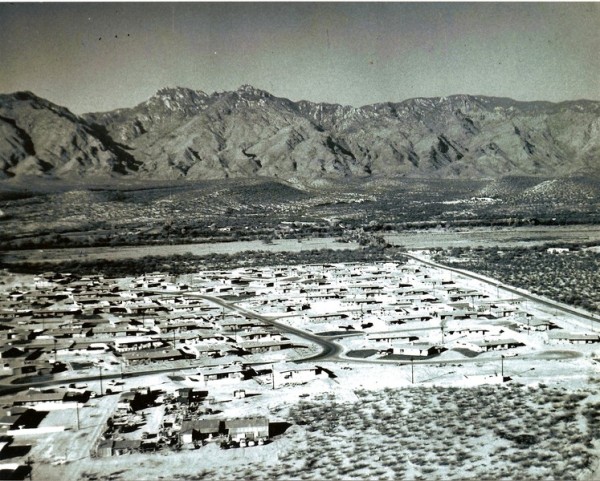
Nomination Summary Paragraph
Prepared by Demion Clinco
Located on the northeast side of Tucson, The Indian Ridge Historic District is a significant middle-class Tucson neighborhood which demonstrates 1955 through 1964 community growth patterns and architectural styles from the peak of Tucson's Post-World War ll residential subdivision development. The five fully planned and developed subdivisions were executed as three distinct enterprises by the Lusk Corporation: Indian Ridge Estates (1955-1959), Indian Crest Estates (1956-1959) and Indian Terrace Estates (1957-1964). The three developments were completed with a comprehensive architectural approach combined with eclectic landscaping to create a harmonious, standardized quality that fosters a cohesive sense of place. In addition to the residential properties, the Lusk Corporation conceived a commercial shopping center on the northwest corner of Tanque Verde Road and Sabino Canyon Road to be part of the original land use, which affected planning, platting, watershed and drainage throughout the District. Extensive remodeling of the shopping center has compromised its historic integrity; it is therefore excluded from the District.
The five contiguous subdivisions of the Indian Ridge district feature broad, curving roadways that flow and meander though natural and enhanced contours of desert typography. During the period of significance, there was no mass transit serving the suburban outskirt of the city. Ownership of an automobile was essential for living in Indian Ridge. Neighborhood design catered to the mature automobile culture; every home included a carport.
The harmonious unity of the district can be traced to the limited architectural options offered to buyers and oversight by a design review committee for potential changes to the original Lusk designs. Floor plans, elevations, materials and colors were resticted, but slight diversifications on each street created subtle variations within overall uniformity. The primary design vocabulary was limited to single-story ranch houses with asymmetrical facades, exposed brick and carports.
The prominent consideration of the automobile, the limited architectural options and the indigenous desert vegetation combined with imported trees and plants created a unique constructed environment that typified popular post-Worl War ll Tucson planned communities.
Within the District there are 375 individual sites, 367 residences, 4 well sites, 3 formal entry walls and 1 swimming pool. Of these, 275 residences, the 3 entry walls, the 4 well sites and the swimming pool are considered to be contributing properties; 96 residences are considered to be non-contributors.

